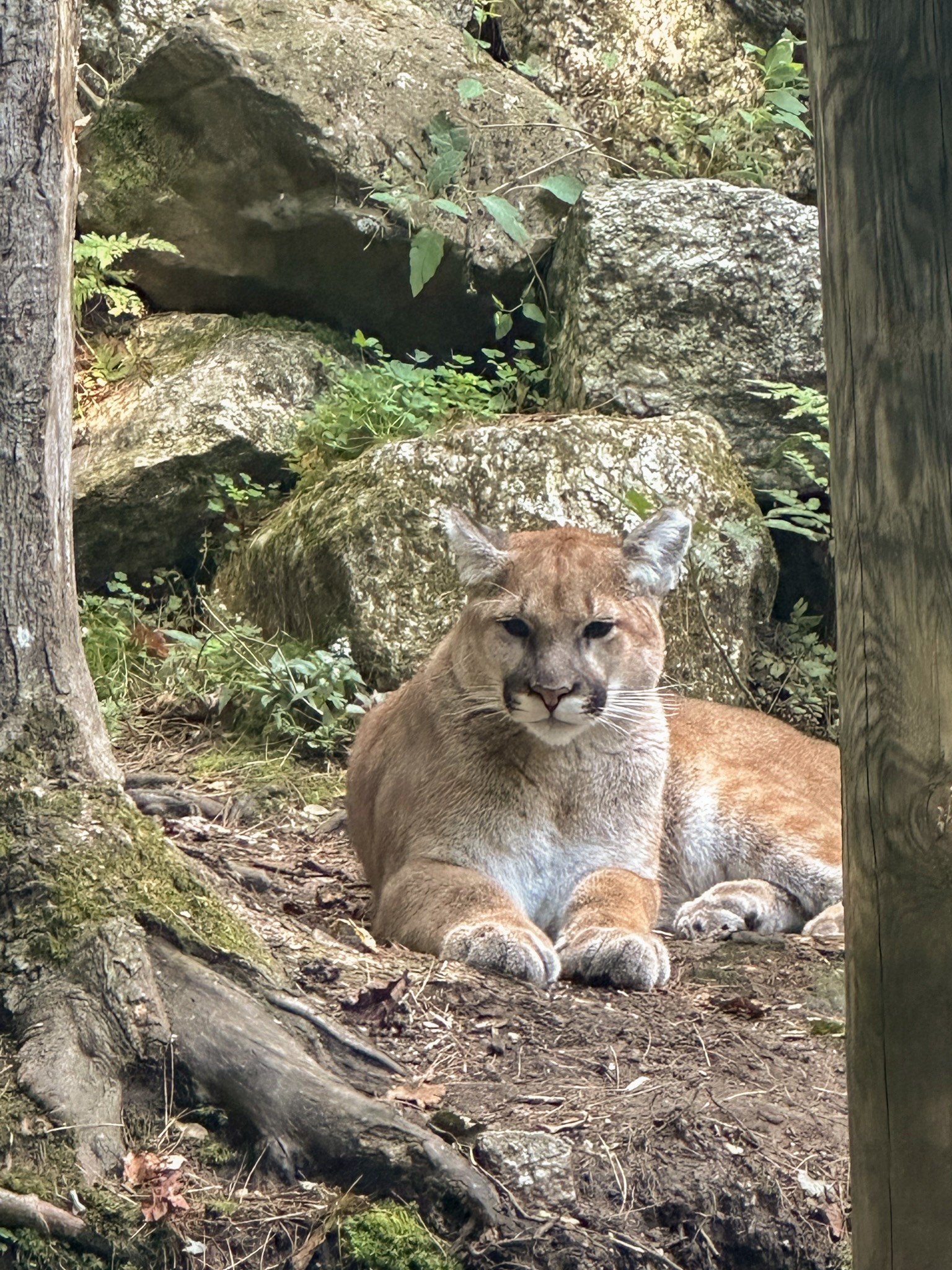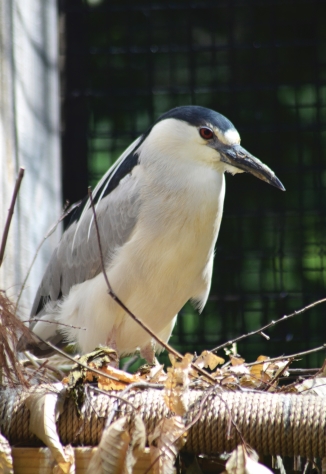Barred Owl
Strix varia
| Kingdom | Animalia |
|---|---|
| Phylum | Chordata |
| Class | Aves |
| Order | Strigiformes |
| Family | Strigidae |
| Genus | Strix |
| Species | S. varia |
| Lifespan | typically 4 1/2 years in the wild, (banding record 18 years 2 months) |
| Size | 40-50 inch wingspan; weight: 1.5 to 2.5 pounds |
| Eggs Laid | 2 to 3 eggs |
| Status | Common |

About Barred Owls
What are tips for identifying a Barred Owl?
Barred Owls are medium to large gray-brown owls without feather tufts on their heads. They have dark brown bars down their chests, and are the only dark-eyed owl that lives in New England. Females are larger than males. The call of this owl usually comes in a series of eight hoots which sound like “Who cooks for you, who cooks for you all”. The Barred Owl is the most common owl found in New Hampshire.
What is the habitat of the Barred Owl?
Barred Owls are found throughout the eastern United States, in north central Canada, up to southeast Alaska and down into Washington, Oregon and Idaho. Barred Owls are usually found living in mixed forests of deciduous and coniferous trees, or wet, swampy areas. Their home range usually covers several hundred acres. Barred Owls are sometimes found in towns perching near bird feeders that attract mice and squirrels.
How do Barred Owls hunt and what is their prey?
Barred Owls hunt from a perch and will swoop down with silent flight to grab prey with their talons. They most commonly hunt for a variety of mouse species but will also prey upon chipmunks, squirrels, rabbits, grouse, frogs, smaller owls, snakes, insects, etc. On occasion the Barred Owl will wade into water to catch crawfish and fish.
How does the Barred Owl raise its young?
Barred Owls usually nest in tree cavities, but will also nest in the abandoned nests of hawks, crows and squirrels. They tend to nest near swamps, marshes, ponds or other bodies of water. The Barred Owl typically lay 2-3 eggs, and they will hatch after about 28 - 30 days. When the chicks first hatch they are covered with fluffy down, and after 2-3 weeks a second layer of down is grown. About a month to 6 weeks after the chicks hatch they begin exploring outside of the nest. During this exploration time they continue to be fed by their parents. At 12-15 weeks old the owls will begin to fly and by autumn they are on their own.
What special adaptations do Barred Owls have?
Owls are adapted to be nocturnal predators, with silent flight resulting from soft feathers and serrated wing edges. Their night vision is excellent (black and white rather than color) but they cannot move their eyes in the sockets. To help them see to their sides and behind them owls can turn their heads 270 degrees, much further than a human. They are able to turn their heads this far due to their flexible neck made up of 14 vertebrae, twice the number of vertebrae in a human neck. Their hearing is acute making it easy to pinpoint the site of prey. Barred Owls take advantage of excellent camouflage to help them avoid crows, jays and other birds that might harass them during the day when they are trying to rest.
Fun Facts!
- A barred owl call sounds like "Who cooks for you, who cooks for you all?"
- A barred owl can turn its head 270 degrees.
- Barred owls are most active while hunting during dawn and dusk.























